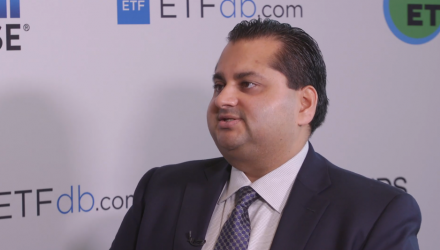In the late stage of the economy cycle, investors still want to be in the markets but want to hedge their bets. One way to still play the game but remain defensive is through a smart beta exchange traded fund strategy.
“One of the most important things is diversification. Because we think about all the risk factors that we have out there – trade wars, government shutdowns, slowing growth, you don’t know which factors are necessarily going to work or which securities are going to work, so having a diversified approach to your stocks and to the factors you’re exposed to is very important,” Mannik Dhillon, President, VictoryShares and Solutions, Victory Capital, said at Inside ETFs.
Dhillon explained that factors like minimum volatility can help protect investors in case of another pullback and a multi-factor approach would also better enable investors to capture further upside potential.
For example, the VictoryShares US 500 Enhanced Volatility Weighted ETF (CFO), VictoryShares US EQ Income Enhanced Volatility Weighted ETF (CDC) and VictoryShares US 500 Volatility Weighted ETF (CFA) are some options that investors can think about. The ETFs start with the broad market and screens for companies with four quarters of positive earnings. Those stocks are then weighted based on their standard deviation over the past 180 trading days. Stocks with lower volatility are given higher weightings and stocks with greater volatility are given lower weightings. Ultimately, all securities that pass the earnings criteria are present, just at different weights.
